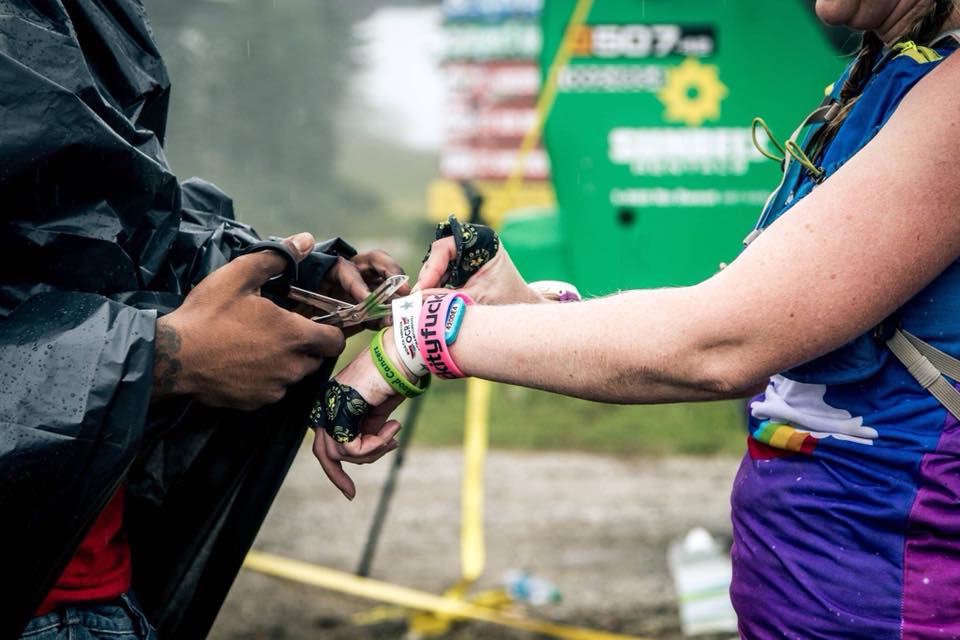
After numerous tries, battered hands and terrible weather another athlete surrenders their band at NORAM.
Mandatory obstacle completion (MOC) courses like North American Obstacle Course Racing Championship (NORAM) are designed to challenge you. If you are not highly proficient at obstacles or have never had to do a MOC course, you may have found yourself stuck at an obstacle. Add in some bad weather like rain and the exhaustion of climbing a mountain and your race may not have gone according to plan. So what now? Do you give up and leave the championship races only for the pros? Hell no, Obstacle Course Racing (OCR) is a sport for everyone and helps push people out of their comfort zone. Failure is part of training and racing. These experiences and our response to them is what will make you a better athlete months and years from now.
If you lost your band at NORAM or have ever lost a band, here’s a recommended plan of action:
1. Acceptance
The first step (just like admitting you are addicted to OCR) is acceptance. Sometimes you beat the course and sometimes the course beats you. It happens to most athletes at some point, even to some of the best in the sport. I’ve seen some of the best fail obstacles at events like OCR World Championship (OCRWC). There’s nothing wrong with failing, it’s how you deal with those failures that help define you.
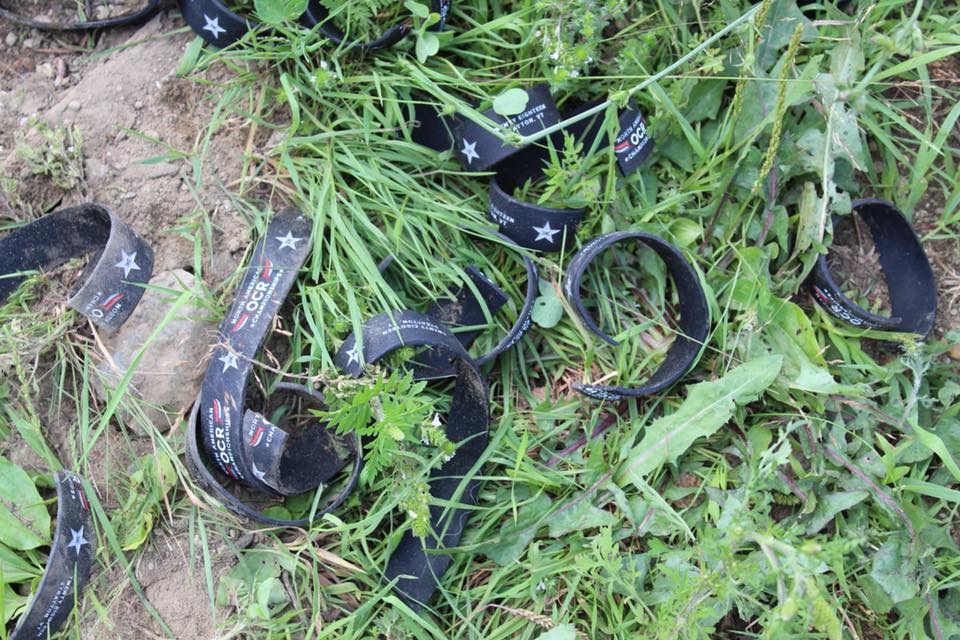
To some, it's just a pile of rubber bracelets, but to those that lost them, it's a representation of leaving it all out there on the course.
2. Determine What Caused The Failure
Now that you’ve accepted that the course got you, it is time to figure out what the problem was and work on it so it never happens again. With MOC courses like NORAM or OCRWC, chances are it was a grip strength problem. Although maybe it was something like a balance issue or another unique obstacle. Not surprisingly, the answer to both is more practice. However, for brevity sake, we’ll focus on grip strength.
What if you normally complete an obstacle but the rain, mud or conditions contributed to your failure? This might hurt some feelings, but that’s part of OCR. If you want perfect conditions that are dry, you can switch to ninja warrior type events. As OCR athletes we need to be able to complete the obstacles in all conditions, not just nice weather. The weather is an additional obstacle (as events like World’s Toughest Mudder show).
3. Specific Obstacle Preparation
I’ll go through two examples that had a high failure rate at NORAM, Conquer The Gauntlet’s Stairway to Heaven and Northman’s La Gaffe du Draveur obstacle:
A. Improve strength required to complete the obstacle – Take a look at how your hand is positioned during these obstacles. That’s the movement and hand position you want to practice.
I. Stairway– For an obstacle like Stairway you want to practice with your hand in that L position with fingers extended 90 degrees away from the palm. Practicing doing pull-ups on similar surfaces, doing weighted pull-ups using a Harbinger Weight Vest and moving back and forth on that surface to build confidence and strength. If you don’t have an obstacle gym, I recommend the crossbeam of a pulley machine or the top of a Smith Machine or squat rack.
II. La Gaffe– The hand position required for La Gauffe is a nunchacku grip. Sure you aren’t hanging all your body weight off the grip, but it is the same hand position. Practice nunchaku pull-ups and rig work with nunchaku grips. If you don’t have an obstacle gym, I recommend using an Atomik Climbing Hold Nunchaku and doing single arm lat pull downs to work on grip and back strength simultaneously.
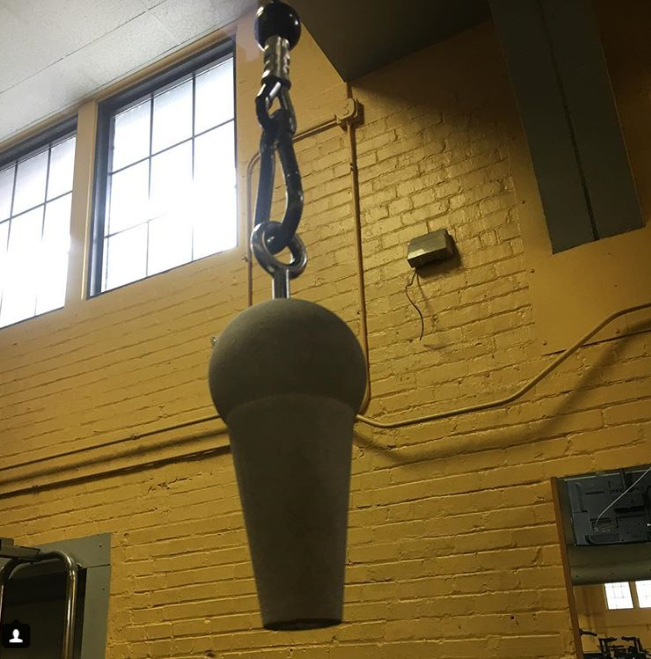
Atomik Climbing Holds Ice Cream Cone setup on a lat pulldown machine to work on grip specific training for both ball grips and advanced nunchaku grip.
B. Improve technique required to complete the obstacle- Ideally, you can find an obstacle gym to work on the exact movement or something very similar. Mud Run Guide has a great list of gyms on their site from all over the country including gyms like Conquer Fitness in Tulsa, OK and Otherworld OCR in Frederick, MD.
I. Stairway – If you don’t have access to an obstacle gym, get creative. For Stairway I used to practice transitions on the top of a squat rack (I recommend wiping the dust off the top first with a wet wipe). Going around in a square or from one side to the other provides specific training. Just be sure to move the bar and supports so you don’t bang your legs while practicing.
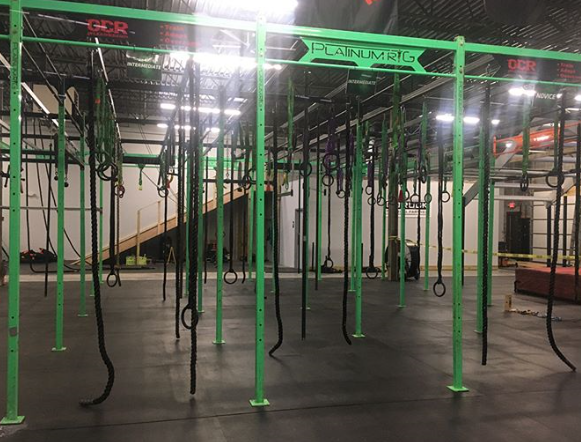
Several vertical metal poles can be seen hanging off the BattleFrog rig at Otherworld OCR in Frederick, MD.
II. La Gaffe– Not many gyms have a La Gauffe, that being said you want to work on climbing metals poles. Some obstacle gyms have rigs with a metal pole that can provide specific training for grabbing and securing yourself. Another option is finding a swing set to practice climbing metal poles.
For both of these, the technique is largely about body awareness and control. Any practice of climbing and transitioning will help. Experiencing a wide variety of obstacles from different series, will expand this base of experience making the new obstacles you encounter at the championships easier (as always Mud Run Guide has discount codes to help you out).
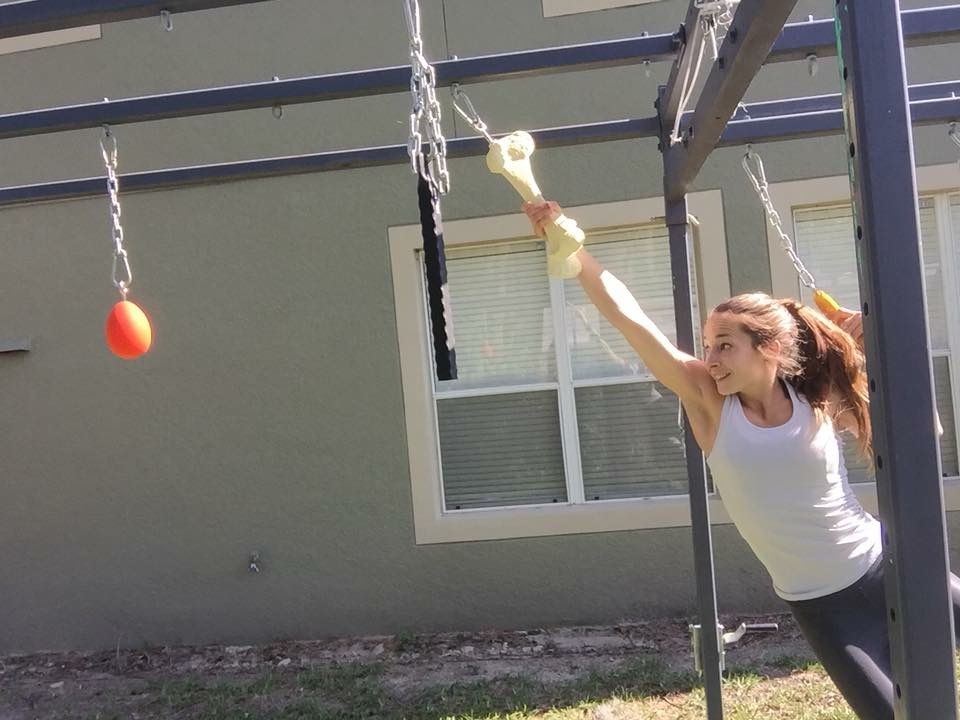
Conquer The Gauntlet Pro and part of the 1st Place Pro Female Team Mom Squad, Ashley Samples, practices rig specific work with Atomik Climbing Holds in her backyard.
C. Run a race wear you encounter the same or similar obstacles- This may be the least feasible option since it might involve travel. However, it will get you used to doing the obstacle with a high heartrate and in race conditions.
I. Stairway – Head to Conquer The Gauntlet in the Midwest.
Use code CTGMRG for 10% off
II. La Gaffe– Head to Northman Race in Canada
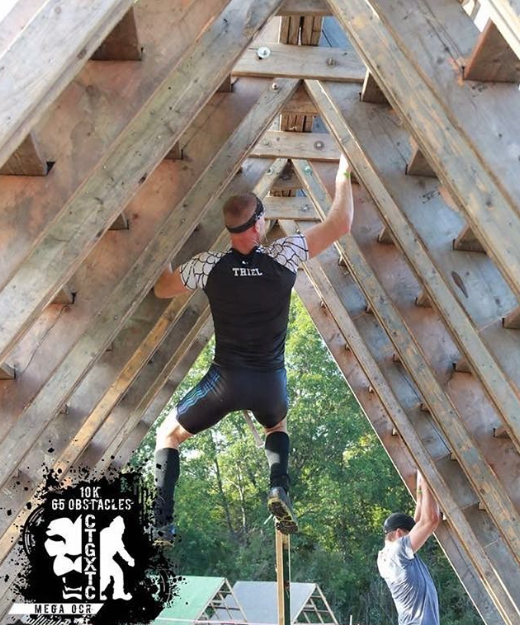
Strength & Speed's Nathan Thiel crossing Stairway to Heaven thanks to specific obstacle preparation.
4. Overcoming The Mental Hurdle
One of the biggest challenges you will face is the lingering mental scar. Athletes who have trouble or fail an obstacle develop this belief that “I can’t do it” or “this one always gives me problems”. If you are running up to the obstacle with that mindset, you are priming your body for failure. Instead you need to think “I got this, this is what I’ve been preparing specifically for and last time I was underprepared but now I’m ready”. Having a positive mental mindset will yield surprisingly positive results.
To further the positive effects of mental preparation, watch videos of other athletes completing the obstacle successfully. You’ll pickup little tips and tricks from them, some consciously and some sub-consciously that will make the obstacle easier. Plus, when you watch them your brain fires mirror neurons (functional magnetic resonance imaging shows your brain behaves in a pattern like you are doing the obstacle thus making it a form of practice).
Keep training hard and don’t get discouraged. Having a plan is always a good idea, which is why I wrote two books focused on OCR training “Strength & Speed’s Guide to Elite OCR” and “Mud Run Guide’s Ultra-OCR Bible”. Pick up a copy today and get similar tips like those provided above, as well as specific workouts to help you crush your next OCR.
Seeing other athletes, whether they are racing for the podium or just trying to make the time cutoff with their band intact complete an obstacle they didn’t they think they could do is one of the aspects that make OCR great. Grab some friends, head to the course and push your limits. If you come up short, don’t be ashamed, just train hard and come back next year. It might even take a few tries a few successive periods of training and failed attempts spread over months/years but the consistency will pay off eventually. In the end, all those baby steps forward will bring you to new heights as a fitter and more well-rounded athlete capable of adapting to greater challenges.
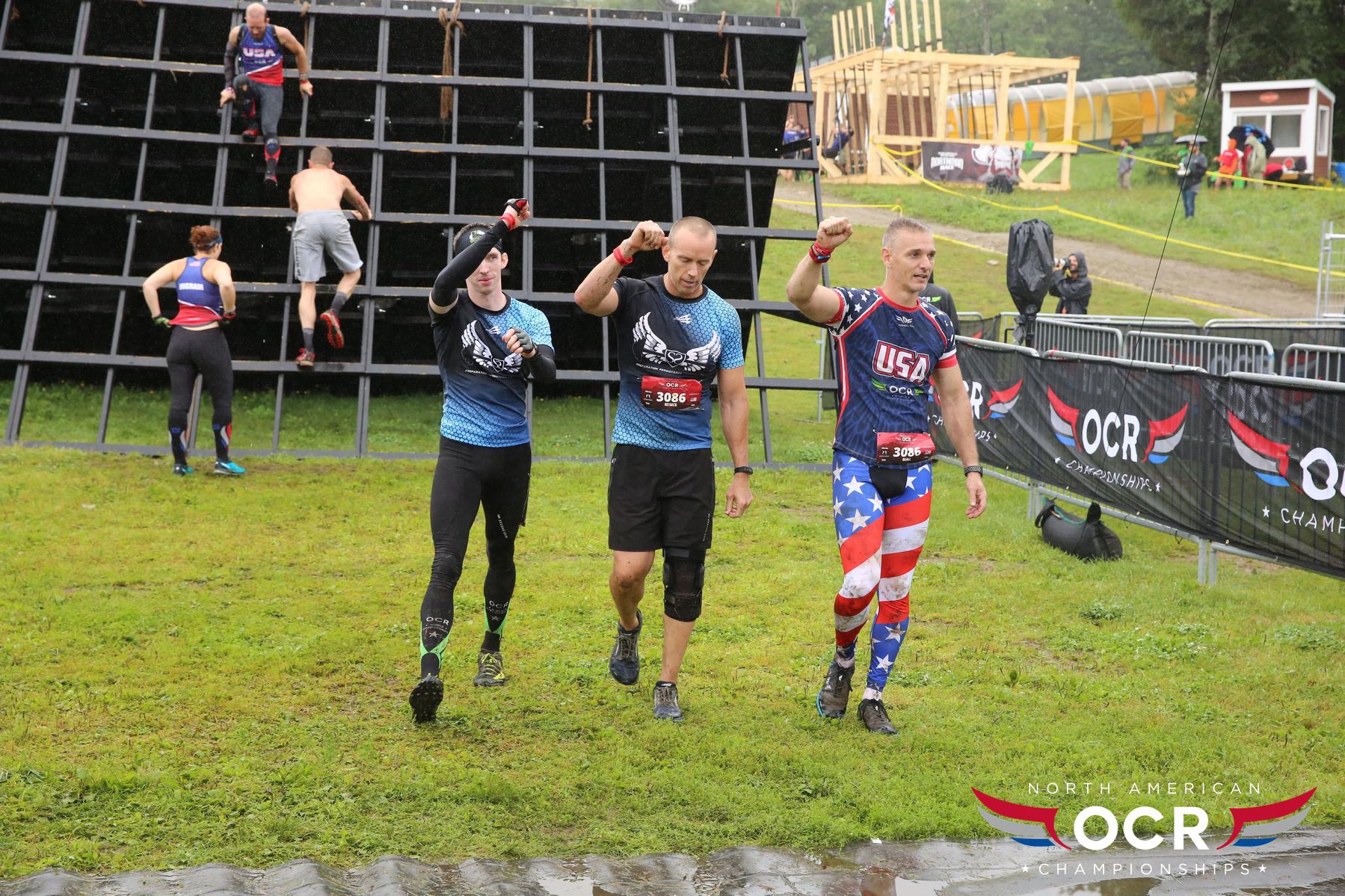
William Shell, Kevin Reiseck and Victor Beall cross the finish line of the team race with bands proudly intact.
Band cut picture provided by Charles Haupert
Everett McNally III photo taken by OCR Nation and provided by Everett
Bands in a pile picture courtesy of Harley Feeley
Nicky Loomis picture provided by Nicky and taken by Danielle Elliott
Nathan Thiel picture official race photo from CTG-XTC
Evan Perperis, Atomik lat pulldown and book photos from Amy Perperis of Strength & Speed
Ashley Samples rig from Ashley Samples taken by Dustin Radney
William Shell picture from official race photographers of NORAM
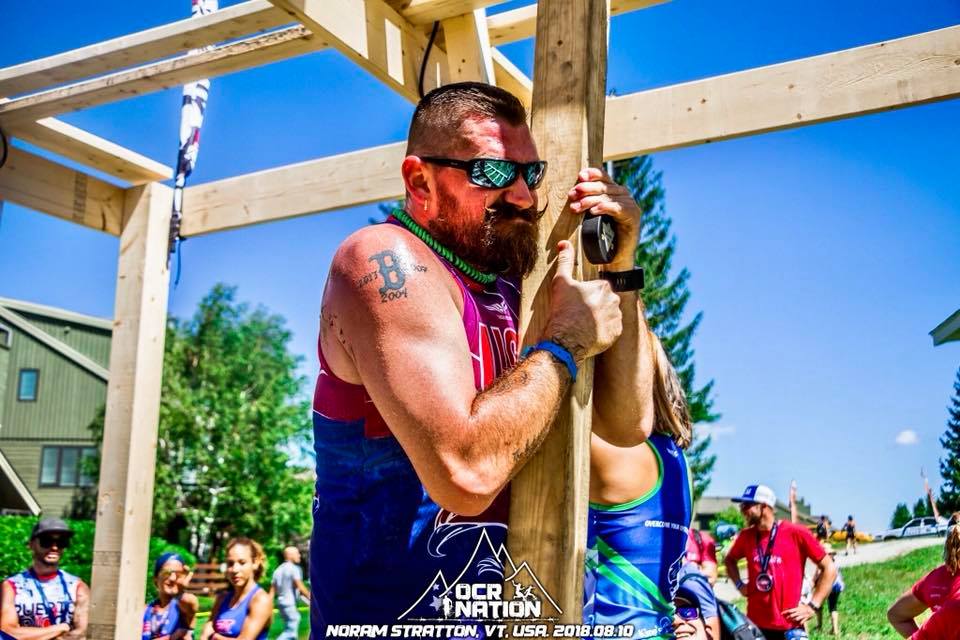
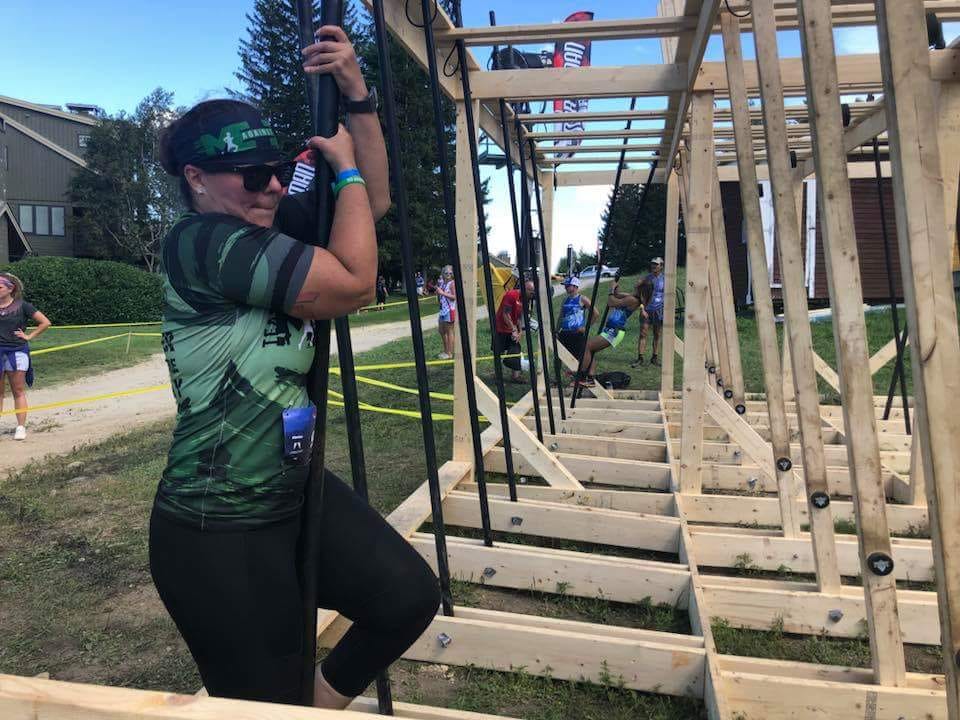
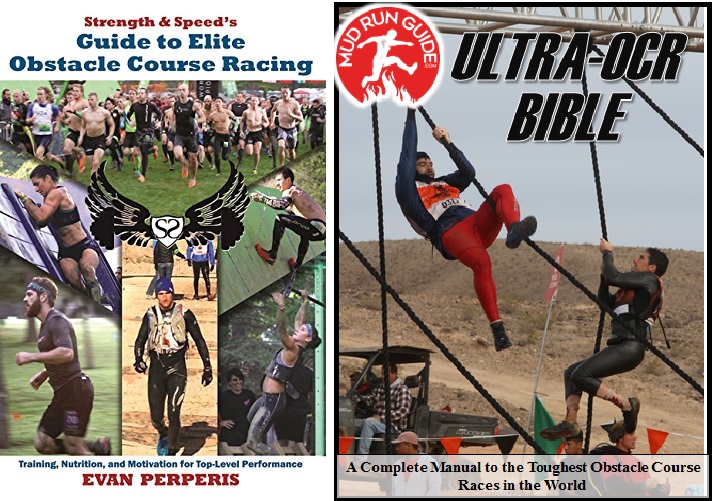


Leave A Comment